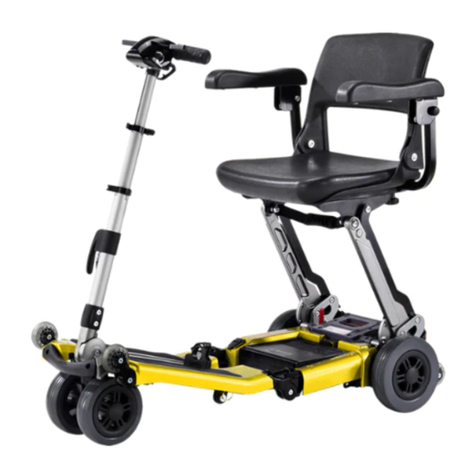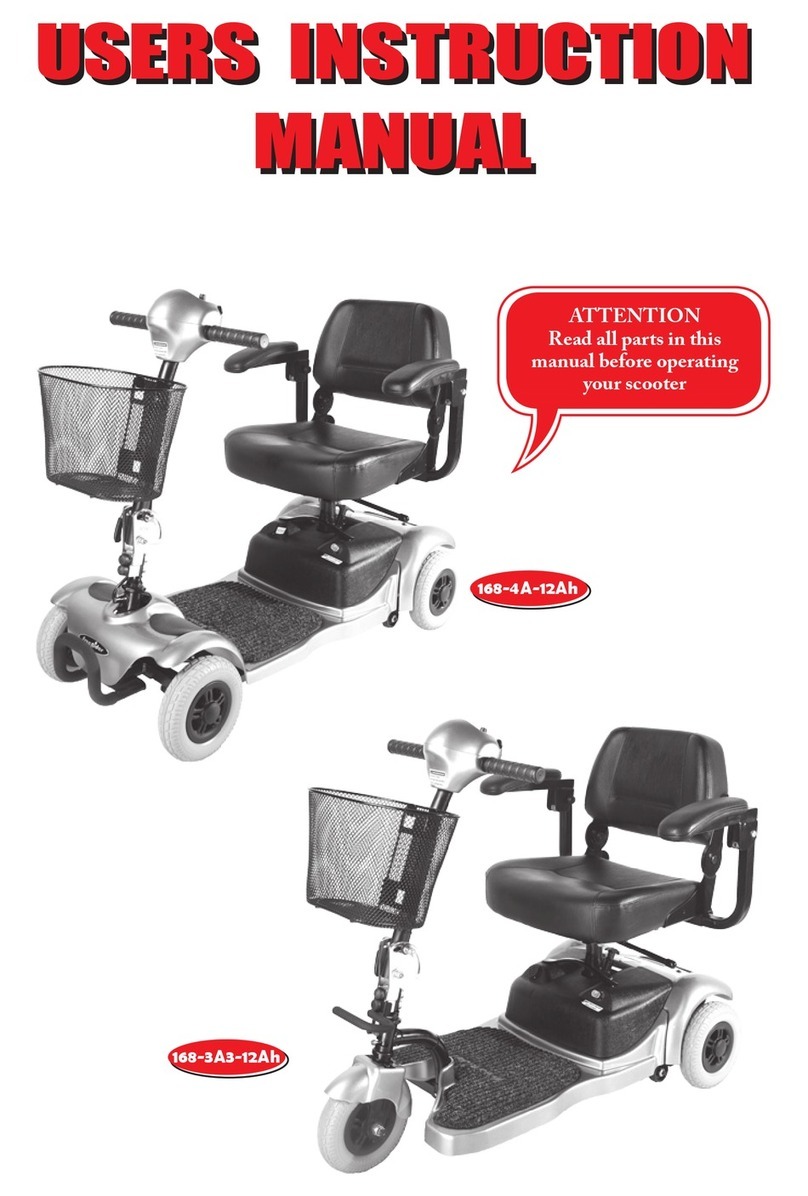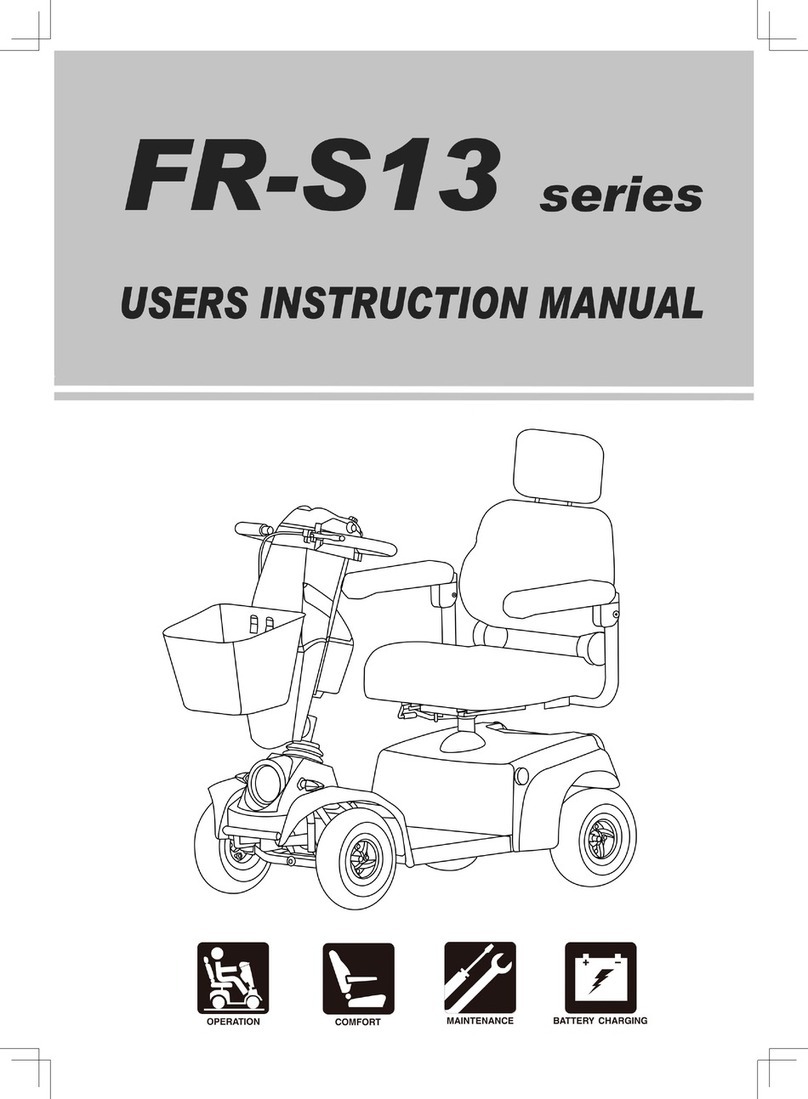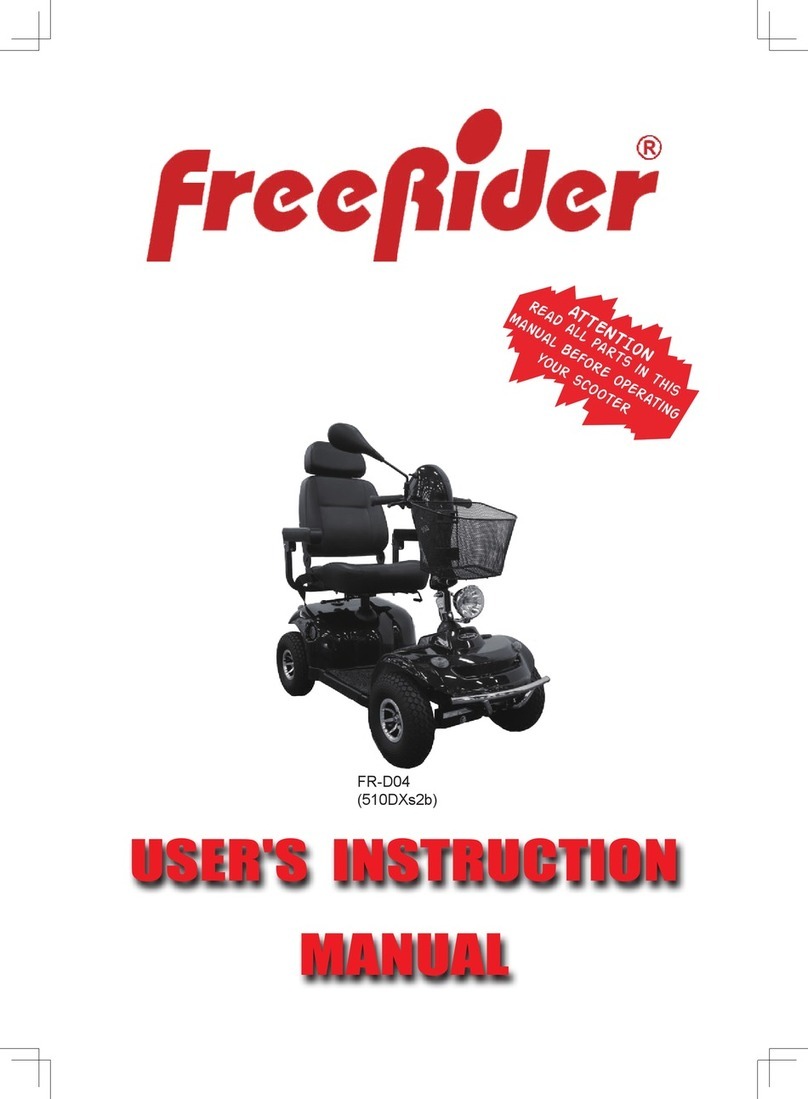F
F
FO
O
OR
R
RE
E
EW
W
WO
O
OR
R
RD
D
D
Please
readand
follow
all
instructions
in
this
Users
Instruction
Manual before attempting
to
operate
your
Scooter
for
the
first
time.
If
there
is
anything
in
this
manual
that
you
do
not
understand,
or
if
you require additional
assistance
for
setting
it
up,
contact
your
A
u
thorised
F
r
eerider
Agent.
Using
your
F
reerider
product
safely
depends
upon
your
diligence
in
following
the
warnings,
cautions
and
instructions
in
this
manual.
Using
your
Scooter
safely
also depends
upon
your
good
judgement
and/or
common
sense,
as
well
as
that
of
your
Provider
,
Carer
or
Health Professional.
Always
think
safety!
C
C
CO
O
ON
N
NT
T
TE
E
EN
N
NT
T
TS
S
S
Introduction
..................................................
2
Product description
...........................................
3
P
urpose
of
your
Scooter
..................
……………..
..........
4
R
u
les
for
safe use
.............................................
4
Getting
to
know
your
Scooter
...................................
5
Operating
your
Scooter
...................... ...............
6
F
r
eewheeling
your
Scooter
.....................................
9
Safety
instructions
and warnings
..............................
10
Safety
instruction
labels
......................................
13
Learning
to
get
about
........................................
14
Dismantling
your
Scooter
for
journeys
away
....................
16
R
e-assembling
your
Scooter
.................................
19
Battery and
batter
y charging
.................................
20
Care and
maintenance
.......................................
25
Basic
fault finding
............................................
29
T
echnical
specification
.......................................
33
Cir
cuit
diagrams
.............................................
35
A
dvisor
y
safety
notice
.......................................
36
Scooter
spare
parts
.........................................
36
Optional
accessories
.........................................
37
Guarantee terms
.............................................
38
Ser
vice
histor
y
..............................................
39
I
I
IN
N
NT
T
TR
R
RO
O
OD
D
DU
U
UC
C
CT
T
TI
I
IO
O
ON
N
N
Congratulations
on
the
pur
chase
of
your
F
reerider
FR168-
3P/4P
.
Please
read
this
User Instruction Manual
carefully before
you
attempt
to
operate your
Scooter
.
Y
our User
Instruction Manual
will
assist
you
to
get
the
most
fr
om your
machine.
This
manual
contains
important information
regar
ding
the
safe
operation
and maintenance
of your
Richmond Scooter
.
Before beginning
to
use
your
Scooter
,
mak
e sure
you
completely
read
and understand
all
instructions
thor
oughly
.
If
you
have any queries concerning
operation
or
maintenance, consult
your
authorised
F
reerider
dealer
.
Please
k
eep
in
mind
that the
operator
of
the Scooter
is
responsible
for
accidents
or
hazar
ds
occuring
to
other
people
or
their property
.
Y
our
Scooter
has
numerous
features
not
found on other
power Scooters. W
ith
proper
care
and maintenance,
you will
enjoy
many
years
of
dependable service.
Y
our
Scooter
needs
to
receive
maintenance
at
regular intervals
and
should be inspected
frequently
for pr
oper
mechanical
operation.
T
r
ouble shooting
guidelines,
methods
of
detecting
improper operation
and making
minor
adjustments
are
included
in
this
manual.
F
ollow all
recommendations
to
obtain
tr
ouble
free,
safe
and
enjoyable
operation of your
F
reerider
Scooter
.
Please
remember
that
when
it
comes
to
service and
repairs,
your
authorised
F
reerider
dealer knows
your
F
reerider
Scooter best.
FR168-3P/4P











































